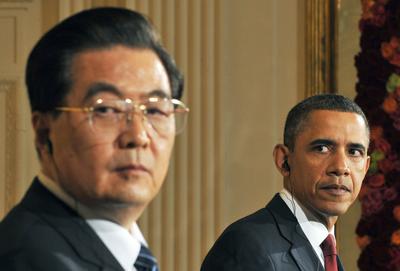Each week thousands of workers are airlifted to and from the northwest of Australia or remote Queensland and their home bases, thousands of kilometres away in Perth, Melbourne, Sydney or Brisbane, for a week or two at a time to do their work at the mines.
This is the fly-in fly-out brigade — the fifo brigade — that has become a part of the Australian mining scene. Fifo gets the mines built and the ore and gas delivered. What it does to the regional neighbourhood is another question altogether. A national parliamentary enquiry has been set up to look at the problems of social, economic and psychological disruption that fifo brings with it. There are problems both ways as a look at the fifo wife’s blog will confirm.
Is fifo an apt metaphor for America’s pivot to Asia — getting what seems like an urgent job done but potentially wrecking the regional neighbourhood? Some think so. Despite welcoming the US initiative, many in the region are worried about the nature of it and whether it might do more to disrupt regional balance than to stabilise it.
The truth is we cannot be too sure about that yet. The United States is still feeling its way toward defining its strategy for the new circumstance that confronts it in Asia and the Pacific. So too is China, perhaps with a less sure grasp on the levers that will drive the direction of change.
In this week’s lead essay, Stephan Frühling points out that while the ‘pivot to Asia’ is the rhetorical phrase that encapsulates that increased US engagement, it is the military strategy, Air-Sea Battle, that has really captured the imagination in Asia and in the United States itself. Air-Sea Battle describes how US forces should operate to ‘blind’ and ‘roll back’ the dense maritime area and access denial capabilities that China has developed over the last two decades.
There are many questions that remain about the political credibility and financial feasibility of the Air-Sea Battle concept — which requires reliance on submarines and a future new heavy bomber, rather than existing surface vessels — but the bigger question is about the parallel between the Air-Sea Battle concept and the AirLand Battle concept that defined containment policy in Europe in the period of US–Soviet confrontation.
Frühling says that the parallels are obvious and intended, both in the ‘bureaucratic politics and service rivalries inside the Pentagon, [the] questionable assumptions about the role of nuclear weapons in major war, but also in the attempt to address difficult operational problems facing US forces in areas of core strategic interest’.
But there the parallels end.
Frühling argues that ‘the AirLand Battle concept developed for NATO’s Central Front fitted into an established and stable regional situation, and supported the existing and widely accepted NATO strategy of containment through deterrence. In light of a perceived loss of US nuclear superiority, NATO forces needed to prevent the Soviet General Staff from being able to brief the Politburo with a viable theory for conventional victory in Europe. A credible AirLand Battle capability allowed NATO to threaten escalation in even localised armed conflict with the Soviet Union in Europe. Mutual interest in avoiding nuclear Armageddon thus prevented armed conflict, contained the physical expansion of communism, and gave US allies in Europe the political space to be the masters of their own destiny. To play their role in containment through deterrence, US forces already forward deployed in Europe (and North Asia) merely had to prepare for their wartime missions, and serve as sacrificial ‘tripwire’ forces demonstrating US commitment.
‘But this no longer adequately describes the political role of US forces in Asia today, because US strategy is no longer based on the containment of physical expansion through deterrence. Despite competing maritime claims, and with the notable exception of Taiwan, territorial disputes are proximate rather than ultimate causes of tension in Asia. Instead, paraphrasing Thucydides, ‘the real cause’ of tension is ‘the growth of the power of [China], and the alarm which this inspired’ in countries in the region’.
In Washington last week, Kurt Campbell, Assistant Secretary of State for East Asian Affairs, tried to underscore the nuance in America’s relations with China, and to de-emphasise the military element in the ‘pivot’ toward Asia. Without conceding the decline in US power, he said that a great deal of effort was being put into assuring that great power relations in the region avoided some of the traps of ‘hegemonic transition’.
American forces in Asia today are not there to contain China’s expansion or even Chinese influence in general, Frühling concludes. That would be a totally and expensively wrong reading of Chinese intentions: Chinese influence in the region — its role as the major economic partner of all East Asia’s economies including Australia, with the exception of the Philippines — is, after all, another product of the welcome and growing integration of China with the regional and global community. Rather, littoral combat ships, marines and other forces now or to be deployed in Southeast Asia need to support a much more nuanced US strategy that is still in the process of being defined, let alone being given an appropriate name.
There is a certain irony, Frühling notes, in the fact that the Americans are yet to come up with a catchy phrase that captures the spirit of what is being tried, but that perhaps is because no one is yet quite sure of what exactly it is.
This is why the fifo metaphor has some resonance. As Frühling says, the current geostrategic window of opportunity for America ‘may well close before it can sufficiently explain to the region what it is trying to do and how’. And all that will be left is the mess and the beer cans.
Peter Drysdale is Editor of the East Asia Forum.

